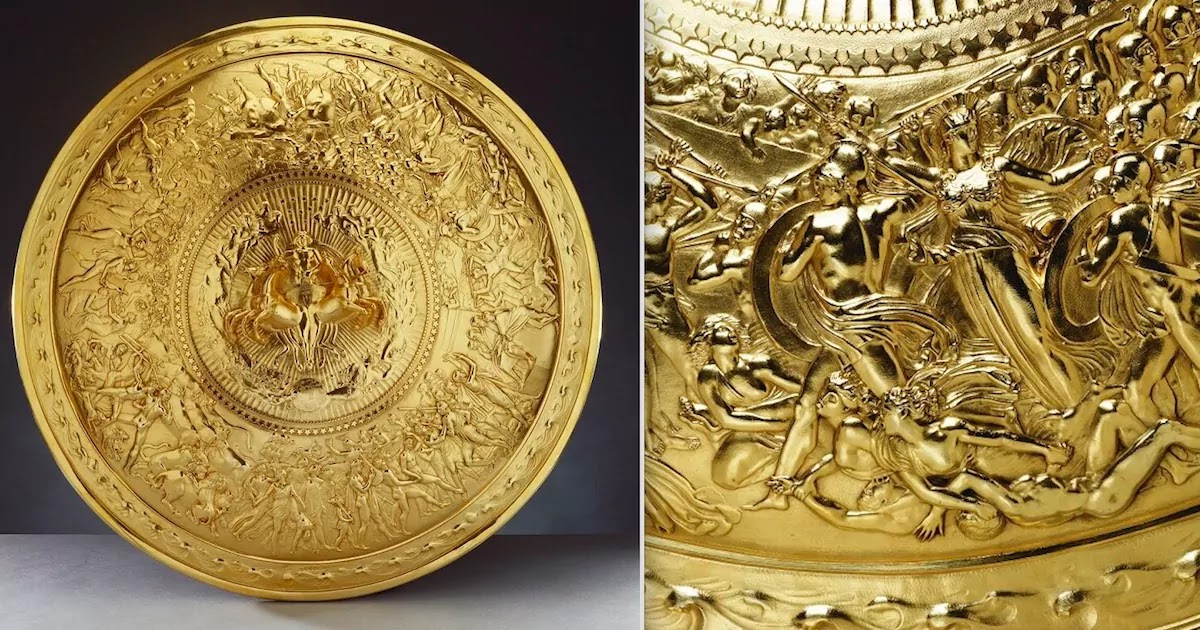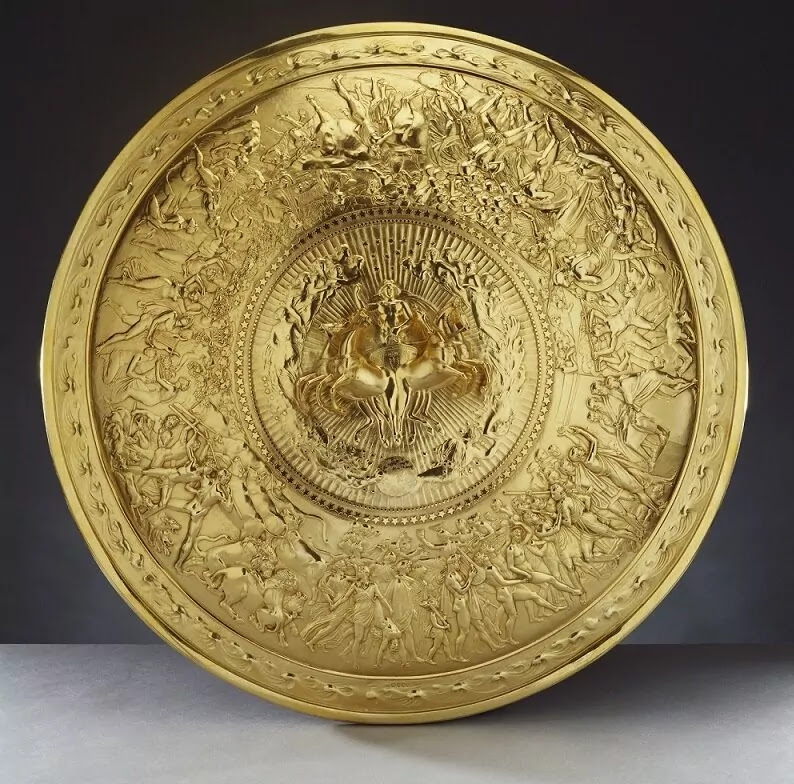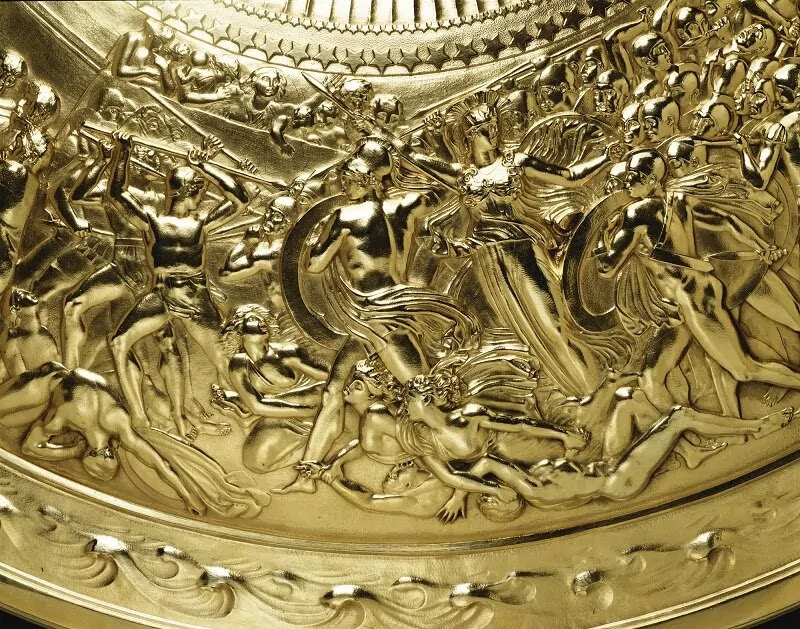
This shield was sculpted by English Jeweller Philip Rundell over 200 hundred years ago and is perhaps the most beautiful example of the 'Shield of Achilles' ever brought into existence.
The shield of Achilles was described in Homer's 'Iliad' and was carried by the legendary Achilles into battles. Homer goes as far as to dedicate 134 verses of the Iliad to the shield alone. The shield created by Rundell is a silver-gilt convex shield with a central medallion cast in high relief. Upon it can be seen the god Apollo surrounded by female figures that represent the constellations of the night sky. The bronze cast shows a series of human events ranging from a feast, to a wedding, to a battle, to a harvest.
Achilles, in the epic poem by Homer, gains new armour, of which the shield is a part, after his mother asks the god Hephaestus to forge it for him. He earlier in the work, he had lost his original armour, after lending it to his fellow warrior Patroclus who was killed in a battle with Hector.
Achilles himself was a hero of the Trojan war, which the Iliad and Homer's other work, the Odyssey, both involve. During one of the battles, Achilles slays Hector who had killed his friend and comrade Patroclus at the gates of Troy.
Achille's mother, Thetis, was a nereid, a sea nymph who had been pursued for marriage by both Zeus and Poseidon, but later joined with Peleus, the father of Achilles and the king of the Myrmidons. It is the Myrmidons that Achilles is to guide into battle during the Iliad.
While Achilles is alive at the end of the Iliad, it is commonly held that he died from an arrow fired by Paris which struck him on his heel. After his death, his armour, which had protected him through many battles until the arrow hit the one uncovered part of his body, was fought over by Odysseus and Ajax the Greater. Both made great speeches as to why they should be the rightful owner. Odysseus was eventually granted the armour but, in turn, passed it on to Achille's son Neoptolemus.
Rundell was born in 1746 and was a highly regarded and successful jeweller with links to royalty. Like many of his era, he was fascinated by the tales from Ancient Greek mythology, inspiring him to produce this beautiful work. He died in 1827.




h/t: greecehighdefinition












COMMENTS